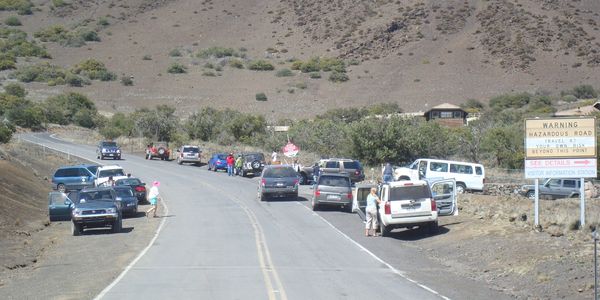ENVIRONMENTAL COMPLIANCE PROJECTS
SRGII provides consulting expertise on environmental compliance, including the NEPA process and documentation, and a range of federal and state laws, regulations, and permitting processes.
Integrated Natural Resources Management Plan/Environmental Assessment, Marine Corps Base Hawai‘i
SRGII worked with MCBH to develop a compliance-mandated combined Integrated Natural Resources Management Plan and Environmental Assessment (INRMP/EA). This document describes a proposed course of action, sets of management actions, and alternatives, and provides analysis demonstrating a lack of significant environmental consequences. The INRMP/EA serves as a guide for the natural resource management program at MCBH in compliance with DoD policy to follow an ecosystem approach. SRGII has assisted MCBH with three compliance-mandated five-year updates of this plan, which has guided the award-winning natural resources management program at MCBH.
Environmental Assessment and Conservation District Use Permit for Maunakea VIS, Maunakea

The Office of Maunakea Management proposed a set of infrastructure improvements at Halepōhaku to address the increase in the number of visitors to the mountain; ensure the safety of visitors and workers; and prevent unintended impacts to natural, historic, and cultural resources. Plans included adding an access lane to facilitate traffic flow and building a new parking area. SRGII developed an EA and a CDUA for the project that analyzed potential impacts on a range of issues and outlined mitigation measures. Plans were adjusted in response to community concerns regarding access and habitat restoration. Upon review of the Final EA, a FONSI was issued. The Board of Land and Natural Resources approved the CDUP, subject to certain conditions.
Environmental Assessment: Kalahaku Overlook Improvements, Haleakalā National Park
The National Park Service proposed a rehabilitation of the visitor use areas at Kalahaku Overlook to improve visitor enjoyment and safety and reduce adverse impacts to natural and cultural resources. Proposed improvements included: trail creation, delineation and rehabilitation; addition of new visitor use areas; and increased educational and ‘stay on trail’ signage. SRGII developed an EA for the project in which potential impacts on a range of issues were analyzed and mitigation measures outlined. A FONSI was issued.
Environmental Assessment: Aerial Application of Acetaminophen for Brown Tree Snake Suppression, Guam

NAVFAC Marianas proposed aerial application of brown treesnake (BTS) toxicant baits within a Habitat Management Unit (HMU) on Andersen Air Force Base to reduce the population of BTS within the HMU; to gather information regarding the efficacy of utilizing the proposed methods to suppress BTS across large landscapes; and to test monitoring methods. The HMU contains federally listed threatened and endangered species. The Proposed Action included ground-based monitoring to assess bait take by snakes and non-target animals, BTS abundance, and rodent abundance. SRGII developed an EA for the project in which potential impacts on a range of issues were analyzed and mitigation measures outlined. A FONSI was issued
Hanalei Dolphin Riverbank Stabilization: Design, Environmental Assessment and Permitting, Kaua‘i
SRGII designed a bioengineered wall to stabilize the bank along an eroding section of the Hanalei River. An associated EA analyzed the potential impacts of the proposed design and outlined mitigation measures. Consultation with U.S. Fish and Wildlife Service and Hawai‘i Department of Land and Natural Resources (DLNR) regarding threatened and endangered species and Hawai‘i DLNR State Historic Preservation Division regarded preservation of historic and cultural features was conducted. A FONSI was issued. SRGII secured necessary permits for the project including: Water Quality Certification; Department of the Army Permit; Stream Channel Alteration Permit; Coastal Zone Management Consistency Determination; Special Management Area Permit and a Right of Entry.
Environmental Assessment: Fencing and Conservation Work in Nu‘u, Haleakalā National Park
Haleakalā National Park proposed increased habitat conservation efforts for native species in the Nu‘u area of the leeward slope of Haleakalā, with an emphasis on the endangered Hawaiian petrel. Conservation efforts included: building an ungulate control fence; improving infrastructure; conducting feral and introduced animal control efforts; removing non-native plants; and increasing native plant cover. SRGII developed an EA for the project and assisted with formal consultations under Section 7 of the Endangered Species Act (including development of a Biological Assessment), and Section 106 of the National Historic Preservation Act. Potential impacts on a range of issues were analyzed and mitigation measures outlined. A FONSI was issued.
SRGII: 111 Hekili Street, Suite A373, Kailua, HI 96734
Tel/Fax: 808-356-0552
